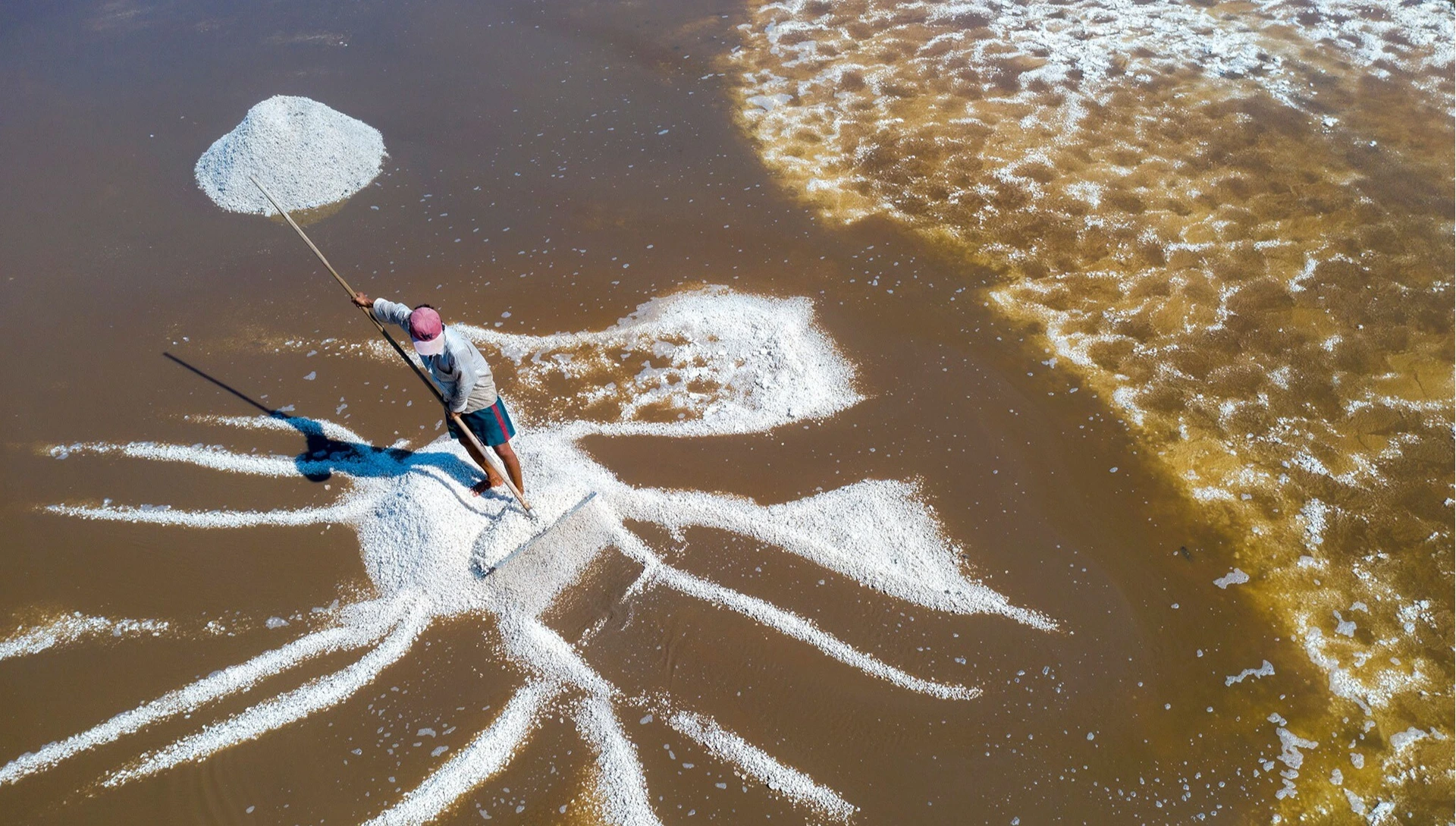9. Bee rafters (Ca Mau)
According to the elders in the profession, the bee rafters were formed very early, from the first days when people set foot in the land of Tran Van Thoi district, U Minh district, Ca Mau province to reclaim the land about the second half of the 19th century.
Every year, when the melaleuca flowers of U Minh Ha forest are in full bloom, swarms of honey bees fly back to nest, the residents living in the middle of this vast melaleuca forest discover the behavior of honey bees is only nesting in sloping tree trunks like house rafters, from which they learn, researched and then came up with a way to make a house for bees and the bee rafter profession was born.
The Ministry of Culture, Sports and Tourism recognized Bee Truss as a National Intangible Cultural Heritage in 2020.

Photo: Law Newspaper
10. Salt making in Bac Lieu (Bac Lieu)
The salt profession in Bac Lieu has experienced more than 100 years of development, fully carrying the characteristics of a traditional craft and typical of folk life and passing down the craft through many generations.
The salt making profession also reflects a part of the history of exploring the land of Bac Lieu in the process of his father's opening up the Southern land, the conquest of nature, and the creation of life for many successive generations.
Therefore, the salt making profession creates products that are not only simple commodities but also reflect the different customs, customs, beliefs, and natural conditions of a land and generations of people here.

Photo: Urban Economics
11. The profession of making pia cakes (Soc Trang)
Pia cake originated from the mooncakes of the Chaozhou people (Tieu people), usually made on the occasion of the Mid-Autumn Festival and New Year's holidays.
Nowadays, the profession of making Pia cakes is concentrated in Phu Tam communes (associated with the place name Vung Thom), Thuan Hoa and An Hiep, Chau Thanh district, Soc Trang province.
The profession of making Pia cakes has become a cultural characteristic of Soc Trang; are offerings and gifts during holidays and Tet, contributing to preserving the traditional cultural values of his father, affirming the brand value of artisans and cake production facilities.
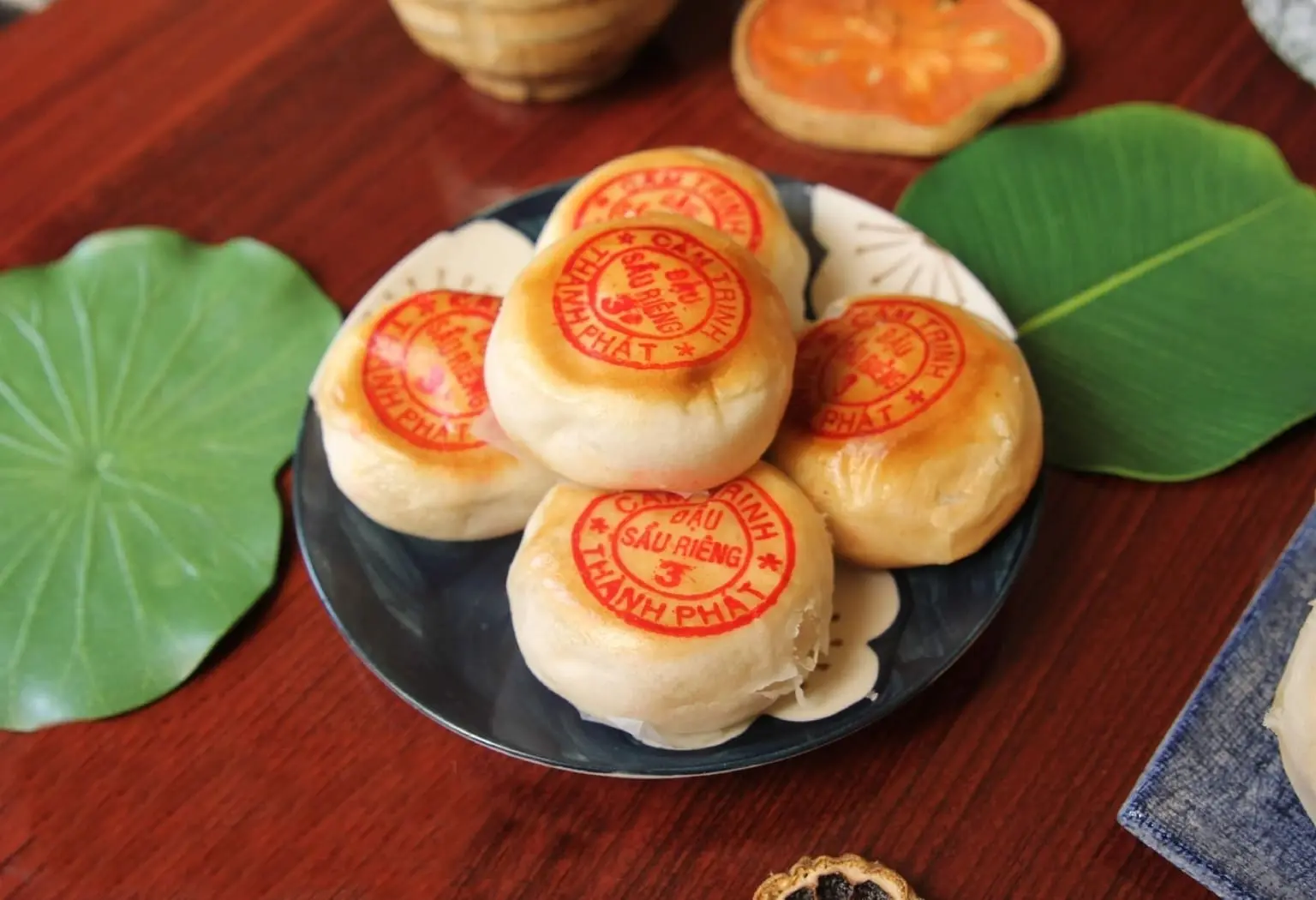
Photo: huongvietmart
12. Phu Quoc fish sauce making profession (Kien Giang)
More than 200 years ago, the profession of making fish sauce existed in Phu Quoc, people caught fresh anchovies and salted them right on the ship, before bringing them back to brew in barrels.
Brewing anchovies in wooden barrels is a characteristic of Phu Quoc fish sauce making. The word is a type of wood used to make fish sauce barrels, which is abundant in Phu Quoc forest. The longer the barrel is stored, the stronger the wood will be, and the better the quality of the fish sauce.
In 2017, the State recognized the traditional profession and craft village of Phu Quoc fish sauce production; In May 2021, the Ministry of Culture, Sports and Tourism included in the list of intangible cultural heritage of traditional crafts and folklore at the national level "Fish sauce making profession in Phu Quoc."
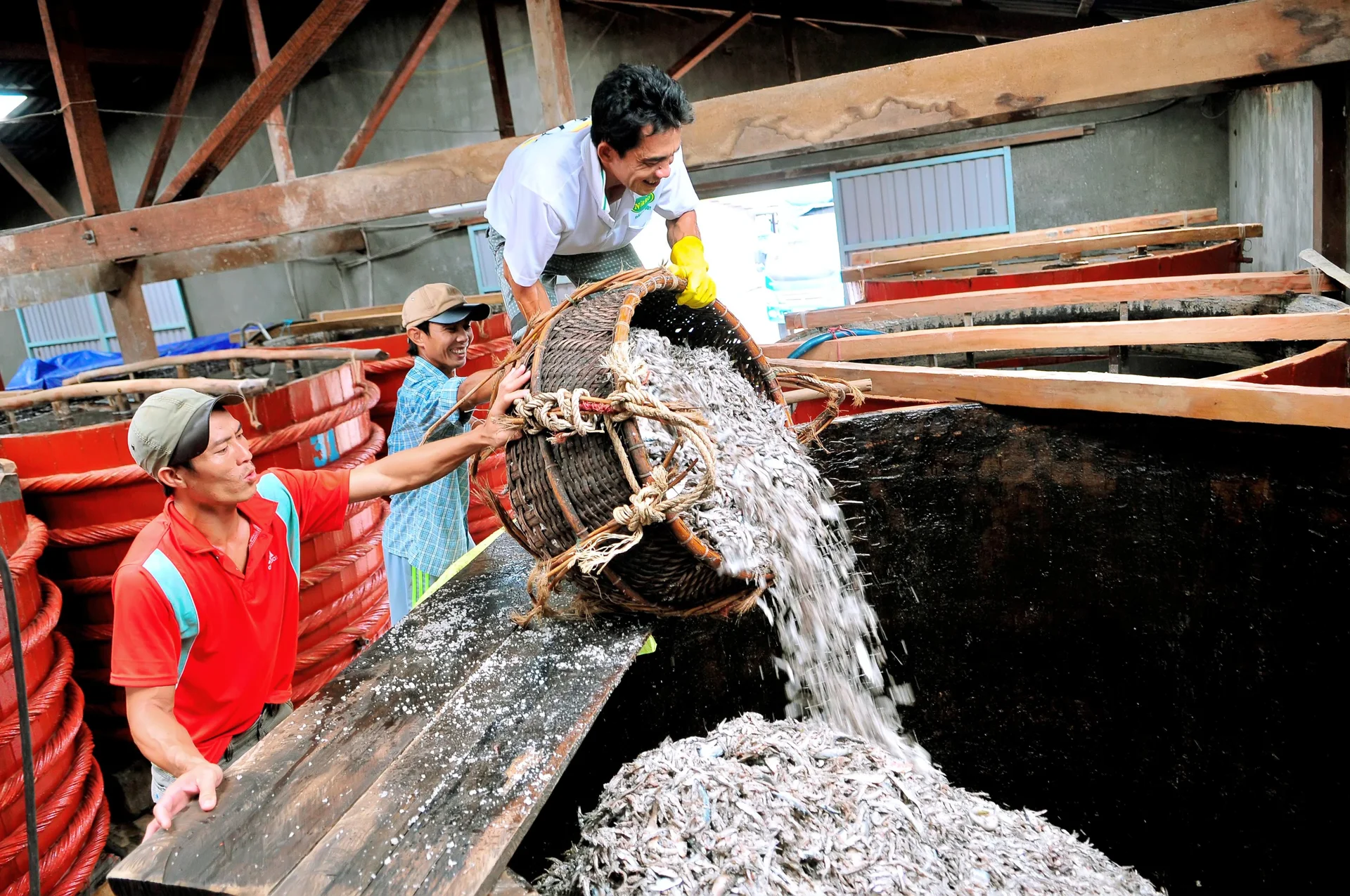
Photo: Huu Tuan
13. Phu Yen fish sauce making (Phu Yen)
Phu Yen has a coastline of nearly 190km, a large fishing ground with abundant aquatic resources. From this source of raw materials, fishing villages along the sea form a fish sauce industry, producing typical delicious fish sauce products.
Phu Yen has many traditional fish sauce processing villages.
Craft villages have been formed for over a hundred years, including a number of long-standing and famous fish sauce craft village brands such as Ganh Do fish sauce (Song Cau town), Yen fish sauce, My Quang fish sauce (Tuy An), Ba Lo fish sauce (Dong Hoa)...
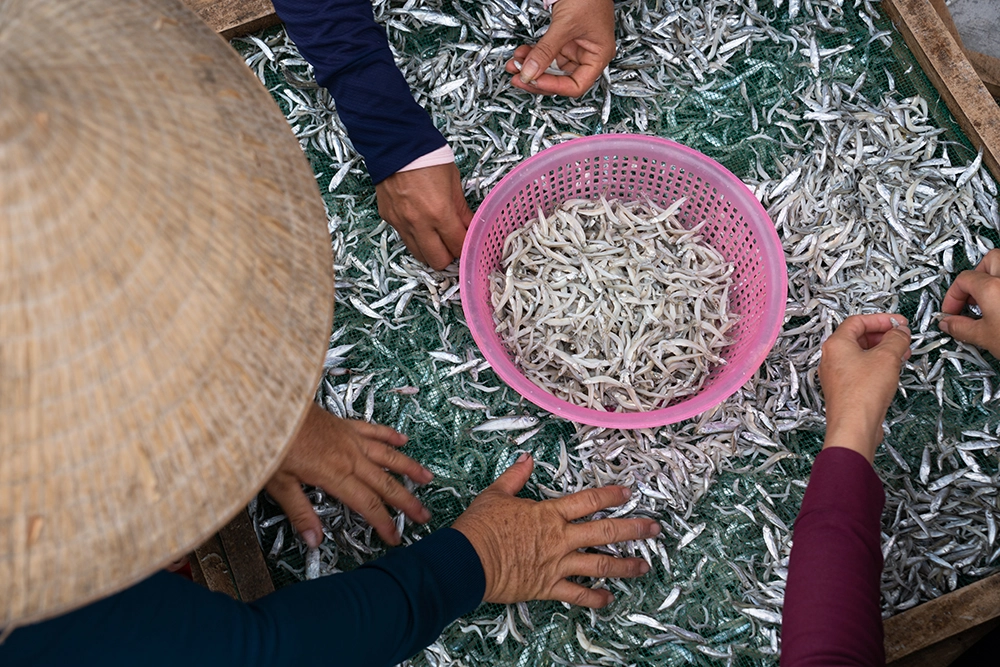
Photo: Da Nang Newspaper
14. Phu Yen rice paper making (Phu Yen)
Referring to the rustic dishes of the land of Phu Yen, it is impossible to ignore rice paper - a familiar dish, associated with the life of local people for many generations.
Phu Yen rice paper is also one of the cakes made from rice flour, in the North it is called rice cake.
The Ministry of Culture, Sports and Tourism recognized Phu Yen rice paper making as a National Intangible Cultural Heritage in January 2022.
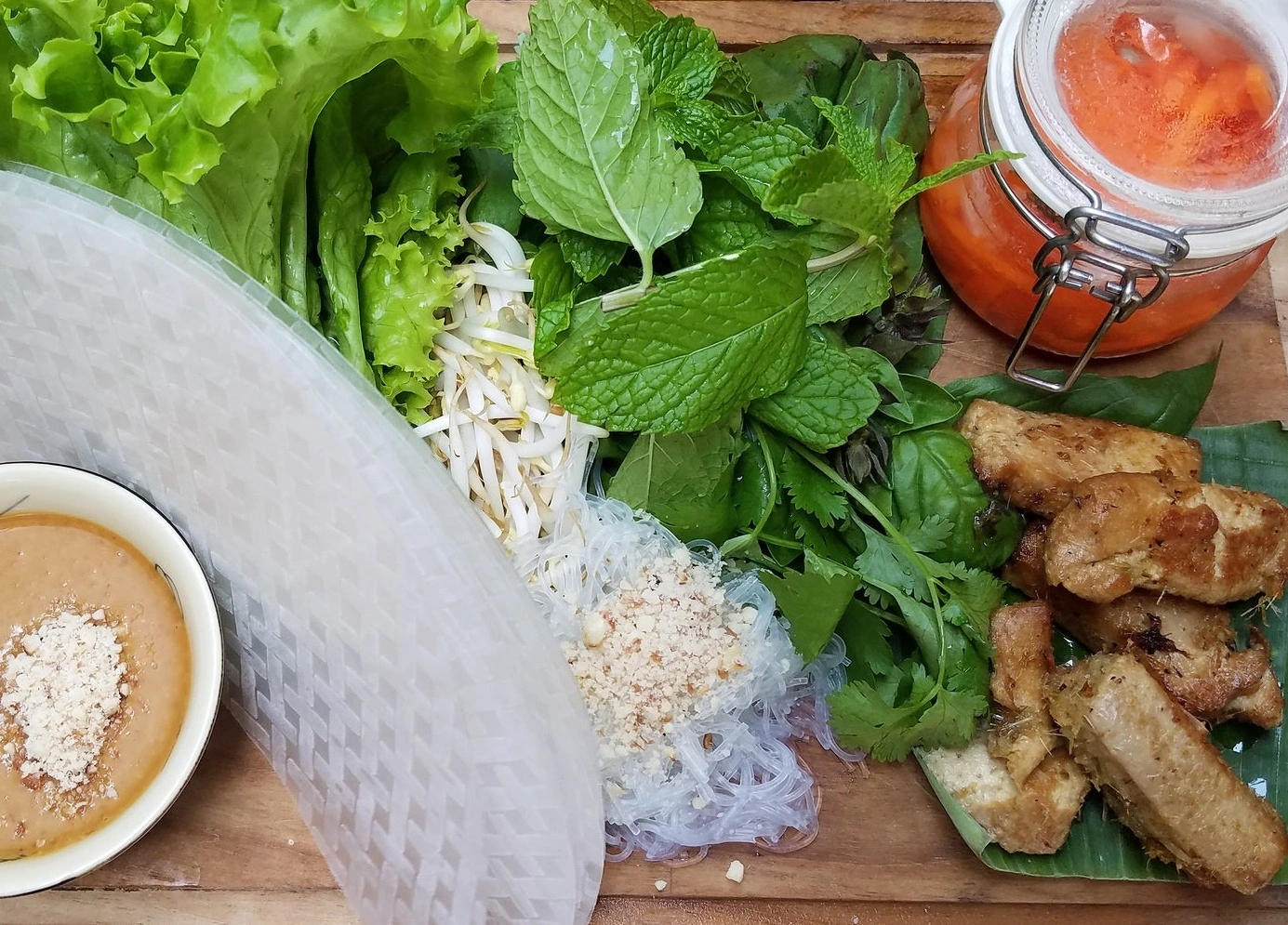
Photo: Ticotravel
15. The art of vegetarian food preparation (Tay Ninh)
From regular vegetarianism, Tay Ninh people have created and transformed vegetables, tubers and fruits in their gardens into simple but extremely attractive and strange vegetarian dishes.
Local food for preparing vegetarian dishes is very rich, from typical products to common foods such as tofu, tofu, straw mushrooms, shiitake mushrooms, abalone mushrooms, chewy mushrooms, banana corn, bananas, potatoes, wheat flour, rice flour, vegetables, etc fruits, salt, soy sauce, seasonings and other spices...
Vegetarian culinary artisans can create and present dishes into works of art.
With typical values, the art of cooking vegetarian dishes in Tay Ninh was included in the List of National Intangible Cultural Heritage by the Ministry of Culture, Sports and Tourism on January 12, 2022.
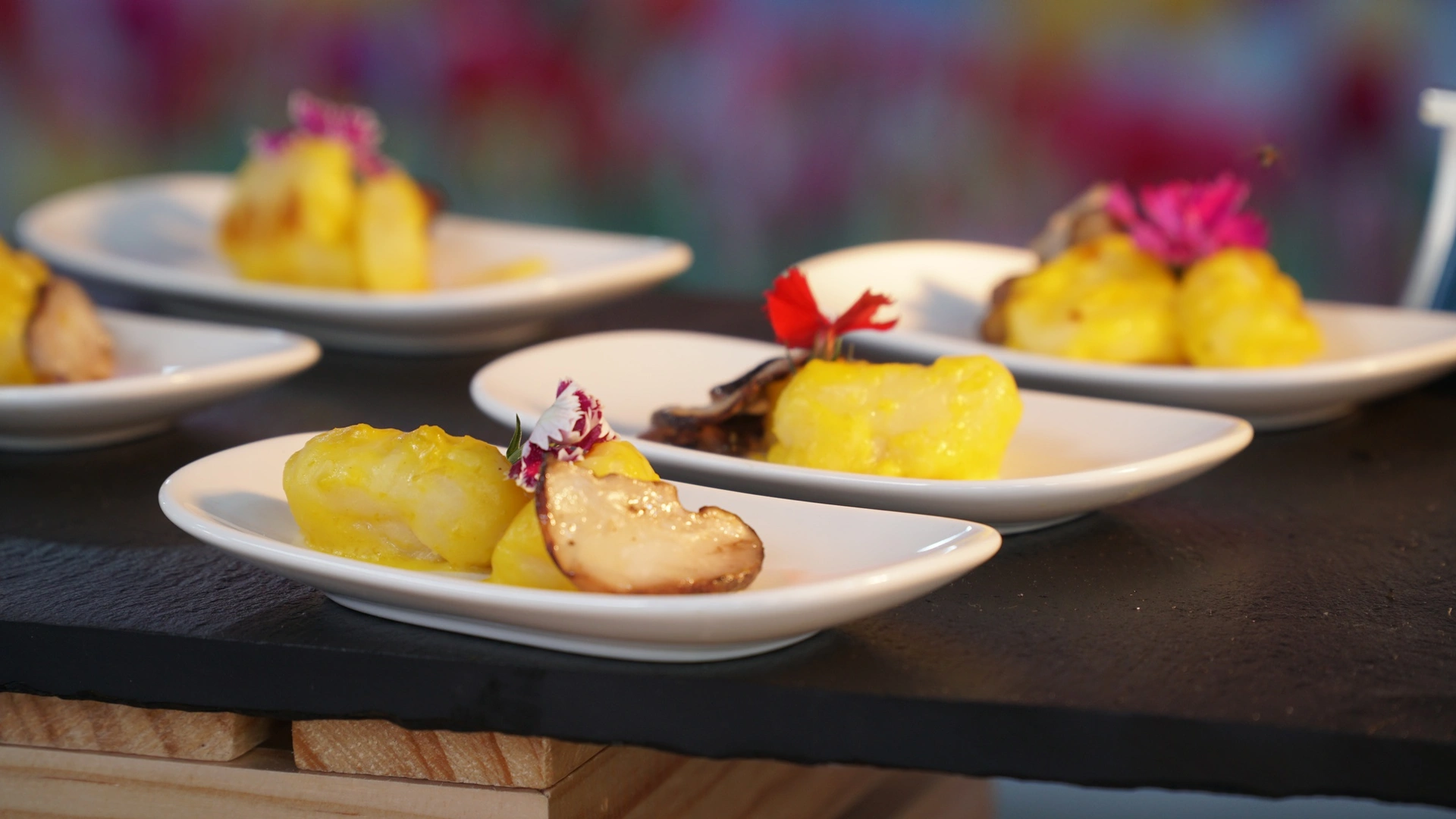
Photo: Tay Nguyen Food
16. Tra Que vegetable cultivation (Quang Nam)
Tra Que vegetable village in Cam Ha commune, Hoi An city, Quang Nam province was formed more than 400 years ago.
This place is famous for many vegetable products with folk medicine, grown by intensive farming methods, and traditional organic fertilization. Many vegetables such as onions, basil, perilla, cilantro... become a brand with distinctive and different aromas.
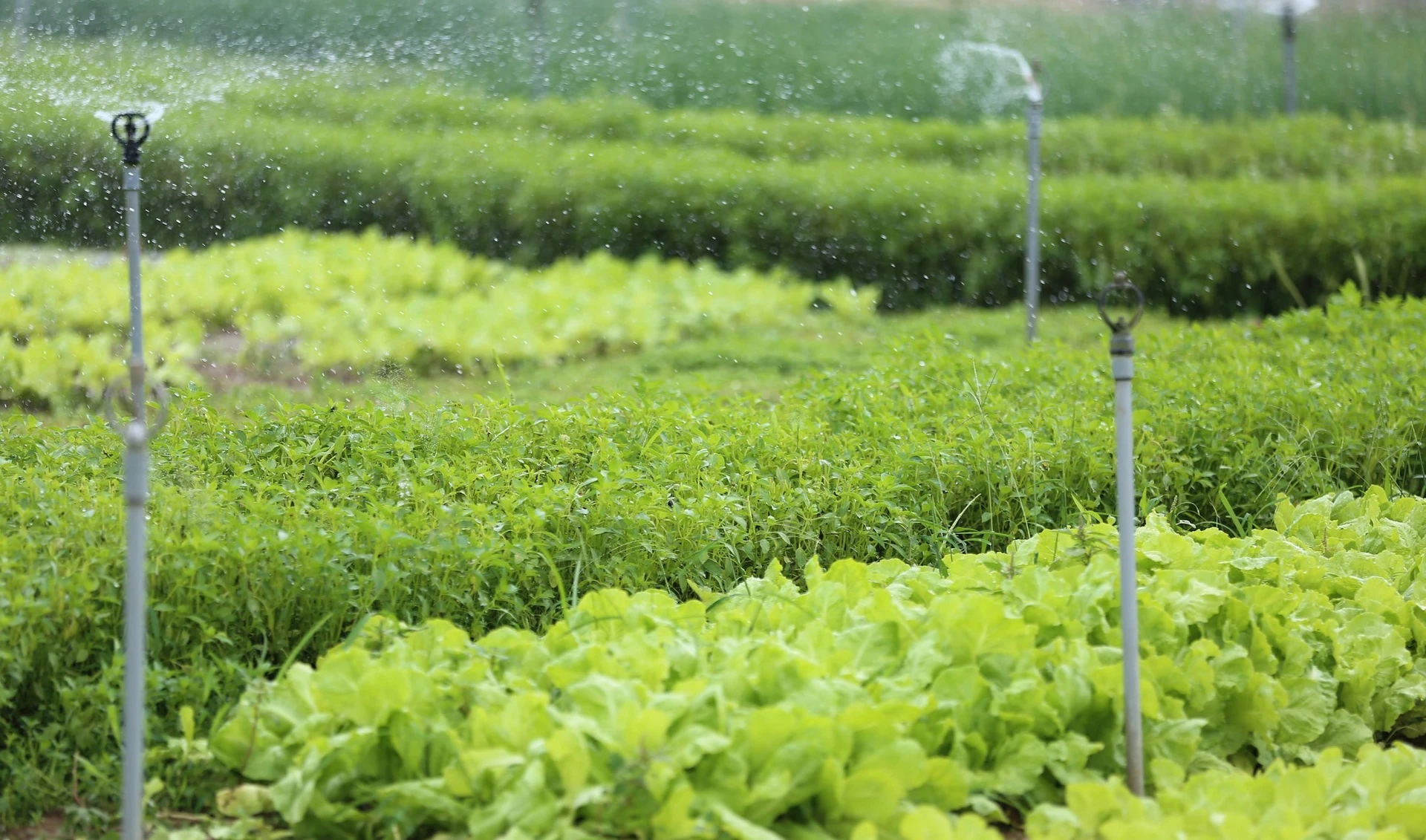
Photo: Fatherland
To be continued...
Source: Vietnamplus
